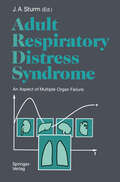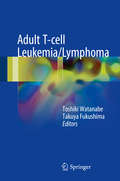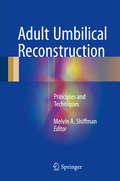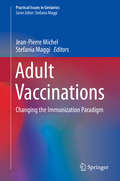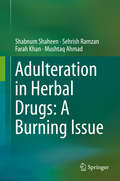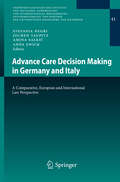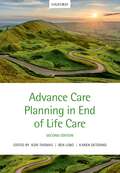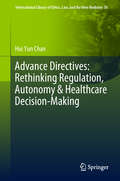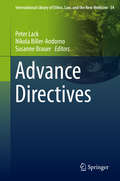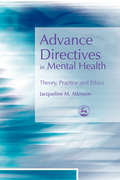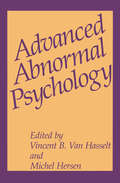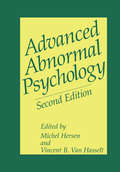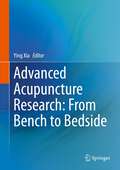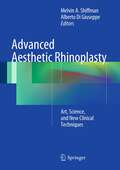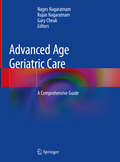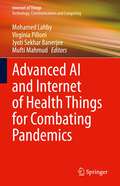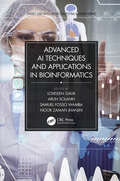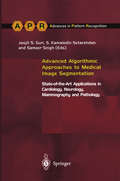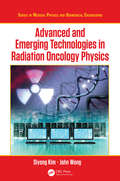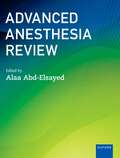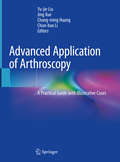- Table View
- List View
Adult Respiratory Distress Syndrome: An Aspect of Multiple Organ Failure Results of a Prospective Clinical Study
by J. A. Sturml. A. STURM In modern society, trauma remains the number one cause of death in people under 50 years, but, despite this, very little attention has been paid to trauma care compared with other diseases such as malignancy or myocardial infarction (Table 1). The efforts that have been made in medical care, however, have showed some success; for example although the frequency of traffic accidents in the Federal Republic of Germany has remained constant over the years, the number of deaths resulting from them has decreased (Fig. 1). The results of improvements in rescue systems, surgical techniques, and intensive care are evident, as shown by a review of the statistics of about 3000 multiple trauma patients treated in the last 15 years at the trauma de partment of Hannover Medical School which reflects the progress that has been made in medical care. After the problem posed by posttraumatic kidney failure had been solved in the 1960s and 1970s, the adult respiratory distress syndrome (ARDS) became the biggest problem in the 1970s and 1980s (Fig. 2). ARDS as a single entity disappeared in the literature in the early 1980s and was replaced by the so-called multiple organ failure (MOF) syndrome. Between 1985 and 1990 35% of the patients in our intensive care unit developed MOF, and 70% of them died. Overall MOF mortality has remained constant since 1985 at about 20% (Fig. 3).
Adult T-cell Leukemia/Lymphoma
by Toshiki Watanabe Takuya FukushimaThis book provides essential information on the epidemiology, molecular and genetic features, anti-CCR4 antibody therapy and a nationwide study of transplantation on human T-leukemia virus type-I (HTLV-1) and adult T-cell leukemia/lymphoma (ATL). This rare but important disease has restricted endemic areas and distinct clinical features such as a high frequency of hypercalcemia, strong predisposition to infection and poor response to chemotherapy, aspects which set ATL apart from other types of non-Hodgkin lymphoma. Given the small number of patients, enrollment in clinical trials has not been feasible, and establishing treatment standard has been difficult but new evidence, such as results of nationwide studies on transplantation, have shown new insights and potential treatments. Based on recent evidence, the book presents new treatment methods for ATL and infection prevention of HTLV-1, enabling clinicians, researchers and post-docs specializing in hematology and virology to gain a valuable overview of the disease.
Adult Umbilical Reconstruction: Principles and Techniques
by Melvin A. ShiffmanThis book starts with a description of the anatomy of the umbilicus and its ideal shape. After a brief summary of the history of umbilical reconstruction, currently used umbilical reconstructive techniques are presented. The reader will also find information on the reconstruction of the umbilicus after malignant melanoma; outcomes and complications will be discussed in the last chapters. Written by respected authors, this book will offer residents and fellows as well as practicing and highly experienced plastic surgeons essential guidance on treatment and decision-making concerning umbilical reconstruction. Its numerous illustrations and clearly structured content make the book a must-read.
Adult Vaccinations: Changing the Immunization Paradigm (Practical Issues in Geriatrics)
by Jean-Pierre Michel Stefania MaggiAfter introductory chapters devoted to the safe production and distribution of vaccines, the book addresses the question of adult vaccination in the framework of a life-course approach to vaccination. It presents the proceedings of multidisciplinary expert discussions with an excellent summary of the current state of knowledge on adult vaccination in various diseases, as well as an overview of the professionals involved and the obstacles to achieving greater vaccine uptake, and how these may be addressed.The book systematically discusses the major vaccine-preventable diseases, as well as regulatory issues in vaccine provision, and presents the results of an expert meeting designed to identify the obstacles to vaccination, and solutions for addressing these barriers. It goes on to extend the discussion beyond the traditional boundaries of human health to encompass the “one health” concept.The book is intended for all those with an interest in vaccination, including physicians (from a wide range of disciplines including geriatrics/gerontology, infectious diseases, pediatrics, internal medicine, and other non-organ specialties), other healthcare professionals, pharmacists, representatives of the pharmaceutical industry and regulatory bodies (EMEA, national authorities), policymakers, the media and the general public.
Adulteration in Herbal Drugs: A Burning Issue
by Shabnum Shaheen Sehrish Ramzan Farah Khan Mushtaq AhmadSubstitution and adulteration in traded herbal raw material are common practice in the herbal industry due to the extinction of required species, deforestation and incorrect taxonomical identification. Herbalists have adopted methods to create high quality adulteration which cannot be detected without performing microscopic examination or chemical analysis. It is difficult to establish specific quality control standards due to the complex nature and innate unpredictability of the chemical constituents of medicinal herbs.The main parameters for measurement and adulteration prevention in medicinal herbs are morphological and microscopic investigation, chemical profiling and DNA barcoding. The need for highly sensitive and more effective approaches for the authentication of medicinal herbs is necessary in order to promote the acceptance of herbal products. Adulteration In Traditional Medicinal Herbs is aimed at promoting awareness of adulteration in traditional herbal medicines for the worldwide scientific community. Parameters are established for the prevention of adulteration through classical and modern scientific tools. Valuable case studies are presented based on ethno-medicinal surveys performed in many herbal markets in Pakistan. Collections of various samples were obtained from these shops then compared with the original plants collected from field. Various phytochemical, organoleptic and DNA barcoding techniques were used in order to detect adulteration in the marketed herbal samples. This book is the first of its kind and is aimed at helping the scientific community to identify particular medicinal plants which are facing adulteration problems in herbal markets and to estimate the extent of adulteration and substitution in commonly used medicinal herbs.
Advance Care Decision Making in Germany and Italy: A Comparative, European and International Law Perspective (Veröffentlichungen des Instituts für Deutsches, Europäisches und Internationales Medizinrecht, Gesundheitsrecht und Bioethik der Universitäten Heidelberg und Mannheim #41)
by Stefania Negri, Jochen Taupitz, Amina Salkić and Anna ZwickWhat is the situation of people who are unable to make decisions due to a physical or mental change? This book gives impulses and answers to many ethical, economical and mainly legal questions which arise and are associated with the end of life. A universal human rights approach and the analysis of the relevant European law are put in front of the presentation of the national legal situations in Italy and Germany. The most topical and controversial issues concerning advance care planning are presented as well as a transnational economic analysis on the effects of advance care planning.
Advance Care Planning in End of Life Care
by Keri Thomas, Ben Lobo and Karen DeteringAdvance Care Planning (ACP) is an essential part of end of life care in the UK and most developed countries. It enables more people to live well and die as they would choose, and has significant implications for the individual person, their family and carers, and our wider society. In the context of an ageing population and increasing possibilities for medical interventions, ACP is a particularly important aspect of quality care. Expanded and fully updated throughout, this new edition gives a comprehensive overview of ACP and explores a wide range of issues and practicalities in providing end of life care. Written by experts from around the world, the book takes a comprehensive look at the subject by exploring the wide range of issues and practicalities in providing ACP; framing the purpose, process, and outcomes of these plans; and providing an important update on national and international research, policy and practice. Chapters also discuss values, goals and priorities, and include detailed case examples to aid best practice. This book is an invaluable resource for all clinicians involved in the caring for people in their final stages of life. It is of particular value to GPs, palliative care specialists, geriatricians, social care teams, researchers and policy leads interested in improving end of life care.
Advance Care Planning in End of Life Care
Advance Care Planning (ACP) is an essential part of end of life care in the UK and most developed countries. It enables more people to live well and die as they would choose, and has significant implications for the individual person, their family and carers, and our wider society. In the context of an ageing population and increasing possibilities for medical interventions, ACP is a particularly important aspect of quality care. Expanded and fully updated throughout, this new edition gives a comprehensive overview of ACP and explores a wide range of issues and practicalities in providing end of life care. Written by experts from around the world, the book takes a comprehensive look at the subject by exploring the wide range of issues and practicalities in providing ACP; framing the purpose, process, and outcomes of these plans; and providing an important update on national and international research, policy and practice. Chapters also discuss values, goals and priorities, and include detailed case examples to aid best practice. This book is an invaluable resource for all clinicians involved in the caring for people in their final stages of life. It is of particular value to GPs, palliative care specialists, geriatricians, social care teams, researchers and policy leads interested in improving end of life care.
Advance Directives: Rethinking Regulation, Autonomy & Healthcare Decision-Making (International Library of Ethics, Law, and the New Medicine #76)
by Hui Yun ChanThis book offers a new perspective on advance directives through a combined legal, ethical and philosophical inquiry. In addition to making a significant and novel theoretical contribution to the field, the book has an interdisciplinary and international appeal. The book will help academics, healthcare professionals, legal practitioners and the educated reader to understand the challenges of creating and implementing advance directives, anticipate clinical realities, and preparing advance directives that reflect a higher degree of assurance in terms of implementation.
Advance Directives (International Library of Ethics, Law, and the New Medicine #54)
by Peter Lack Nikola Biller-Andorno Susanne BrauerThis volume gives an overview on the currently debated ethical issues regarding advance directives from an international perspective. It focuses on a wider understanding of the known and widely accepted concept of patient self-determination for future situations. Although advance directives have been widely discussed since the 1980s, the ethical bases of advance directives still remain a matter of heated debates. The book aims to contribute to these controversial debates by integrating fundamental ethical issues on advance directives with practical matters of their implementation. Cultural, national and professional differences in how advance directives are understood by health care professions and by patients, as well as in laws and regulations, are pinpointed.
Advance Directives in Mental Health: Theory, Practice and Ethics (PDF)
by Jacqueline AtkinsonAn advance directive is a way of making a person's views known if he or she should become mentally incapable of giving consent to treatment, or making informed choices about treatment, at some future time. Advance Directives in Mental Health is a comprehensive and accessible guide for mental health professionals advising service users on their choices about treatment in the event of future episodes of mental illness, covering all ideological, legal and medical aspects of advance directives. Jacqueline Atkinson explains their origins and significance in the context of mental health legislation and compares advance directives in mental health with those in other areas of medicine like dementia or terminal illness, offering a general overview of the differences in the laws of various English-speaking countries. She explores issues of autonomy and responsibility in mental health and gives practical advice on how to set up, implement and change advance directives. The book offers a useful overview of advance directives and is a key reference for all mental health professionals as well as postgraduate students, lawyers who work with mentally ill people, service users and their families and carers.
Advanced Abnormal Psychology
by Michel Hersen Vincent B. Van HasseltAlthough senior undergraduate psychology students and first year master's- and doctoral-level students frequently take courses in advanced abnormal psychology, it has been almost two decades since a book by this title has appeared. Professors teaching this course have had a wide variety of texts to select from that touch on various aspects of psychopathology, but none has been as comprehensive for the student as the present volume. Not only are basic concepts and models included, but there are specific sections dealing with childhood and adolescent disorders, adult and geriatric disorders, child treatment, and adult treatment. We believe the professor and advanced student alike will benefit from having all the requisite material under one cover. Our book contains 26 chapters presented in five parts, each part preceded by an editors' introduction. The chapters reflect updates in the classification of disorders (i. e. , DSM-IV). In Part I (Basic Concepts and Models), the chapters include diagnosis and classification, assessment strategies, research methods, the psychoanalytic model, the behavioral model, and the biological model. Parts II (Childhood and Adolescent Disorders) and III (Adult and Older Adult Disorders), bulk of the book. To ensure cross each containing seven chapters, represent the chapter consistency, each of these chapters on psychopathology follows an identi cal format, with the following basic sections: description of the disorder, epidem iology, clinical picture (with case description), course and prognosis, familial and genetic patterns, and diagnostic considerations.
Advanced Abnormal Psychology
by Michel Hersen Vincent B. Van HasseltAlthough senior undergraduate psychology students and first year master's-and doctoral-level students frequently take courses in advanced abnormal psychology, it has been almost two decades since a book by this title has appeared. Professors teaching this course have had a wide variety of texts to select from that touch on various aspects of psychopathology, but none has been as comprehensive for the student as the present volume. Not only are basic concepts and models included, but there are specific sections dealing with childhood and adolescent dis orders, adult and geriatric disorders, child treatment, and adult treatment. We believe the professor and advanced student alike will benefit from having all the requisite material under one cover. Our book contains 26 chapters presented in five parts, each part preceded by an editors' introduction. The chapters reflect updates in the classification of disorders (i. e. , DSM-IV). In Part I (Basic Concepts and Models), the chapters include diagnosis and classfication, assess ment strategies, research methods, the psychoanalystic model, the behavioral model, and the biological model. Parts II (Childhood and Adolescent Disorders) and III (Adult and Older Adult Disorders), each containing seven chapters, represent the bulk of the book. To ensure cross-chapter consistency, each of these chapters on psychopathology follows an identical format, with the following basic sections: description of the disorder, epidemiology, clinical picture (with case description), course and prognosis, familial and genetic patterns, and diag nostic considerations.
Advanced Acupuncture Research: From Bench to Bedside
by Ying XiaWritten by over seventy scientists and clinicians worldwide from China, USA, Germany, Canada, Japan and other countries, this monograph, with nearly 450 figures and tables, covers a wide range of advanced progress in acupuncture research, from experimental research to clinical applications. In addition to exploring the histopathological basis for acupuncture and mathematical simulation of acupoint response to stimulation, initiation and transduction of acupuncture signals and cellular mechanisms during acupuncture effects as well as chemical and physical characteristics of moxibustion on acupoints are broadly discussed. The topics also include novel data on acupuncture effect with advanced imaging techniques, a unique understanding of meridian-viscera correlation, specific interactions between meridians and neurosensory organs within the system of homeostatic regulation and the acupuncture-induced influences on autonomic function. Several chapters introduce specific approaches with dry needling, silver needling and stainless needling for certain diseases, such as myofascitis, supportive care for breast cancer and chemotherapy-induced peripheral neuropathy as well as perioperative care of surgical patients. Moreover, this book discusses recent research on acupuncture therapy and potential mechanisms for a number of severe and refractory neurological disorders, including hyperactivity of hypothalamic-pituitary-adrenal axis, orofacial pain, chronic pain, itch, multiple sclerosis, autism spectrum disorders, cerebral palsy, depressive disorders, Alzheimer’s disease and ischemic brain injury. The vast amount of information offered in this book provides a comprehensive perspective on advanced acupuncture research to not only acupuncturists, but also to neuroscientists, neurologists, and other clinicians. For medical students and graduate and undergraduate students majoring in biology, physiology and neuroscience, this book offers an advanced course in learning about the mechanism-driven advances in alternative and complementary medicine.
Advanced Aesthetic Rhinoplasty: Art, Science, and New Clinical Techniques
by Melvin A. Shiffman and Alberto Di GiuseppeAesthetic rhinoplasty is among the most common aesthetic operations in the field of facial aesthetic plastic surgery, but it is also viewed as one of the most complex. This comprehensive book provides a wealth of up-to-date information on advanced aesthetic rhinoplasty techniques. After discussion of anatomy, psychological issues, and preoperative planning, a wide range of primary and secondary rhinoplasty techniques are described clearly and in detail with the aid of numerous high-quality color illustrations. The use of fillers in rhinoplasty, ethnic variations in anatomy and techniques, and possible risks and complications are all clearly explained. This book is intended primarily for experienced surgeons in the fields of plastic surgery, cosmetic surgery, general surgery, otolaryngology, ophthalmology, oral maxillofacial surgery, and cosmetic surgical subspecialties. It will also be an invaluable resource for residents and fellows.
Advanced Age Geriatric Care: A Comprehensive Guide
by Nages Nagaratnam Kujan Nagaratnam Gary CheukAs the Baby Boomers age, concerns over healthcare systems' abilities to accommodate geriatric patients grow increasingly challenging. This is especially true with the population deemed to be “the oldest of the old,” specifically those over the age of 85. Unlike any other time in history, this demographic is the fastest growing segment of most developed countries. In the United States the oldest old is projected to double from 4.3 million to 9.6 million by 2030. The increased life expectancy of the population since the early 1900s has been built on the improvement of living conditions, diet, public health and advancement in medical care. With this we have seen a steady decline in the age-specific prevalence of vascular and heart diseases, stroke and even dementia. Older persons are healthier today than their counterparts decades ago. More importantly than in any other age group, the care of the oldest old must be individualized; management decisions should be made taking into consideration the older persons’ expressed wishes, quality of life, function and mental capacity. The inevitable consequence is that there will be an increase in the prevalence of older persons with chronic diseases, multiple co-existing pathologies and neuro-degenerative diseases. The oldest of the aging population are often excluded from drug trials and their treatments are largely based on findings extrapolated from that of the younger old. Furthermore, among the oldest old, physiologically they are more diverse than other segments of the population. Their demographic characteristics are unparalleled and different compared to that of the younger old. Several studies have drawn attention to the differing attitudes among health professionals towards elderly people and many show prejudice because they are old. As a result, the use of age as a criteria in determining the appropriateness of treatment is of very limited validity, yet there are limited resources that guide physicians through these challenges. This book creates a greater awareness of these challenges and offers practical guidelines for working within the infrastructures vital to this demographic. This book is designed for geriatricians, primary care physicians, junior medical officers, specialty geriatrics nurses, and gerontologists. It is divided into 3 sections: General Considerations, Chronic diseases and Geriatric Syndromes. Each chapter provides a summary of important and essential information under the heading of Key Points. Case studies are included in some of the chapters to highlight the principles of management.
Advanced AI and Internet of Health Things for Combating Pandemics (Internet of Things)
by Mohamed Lahby Virginia Pilloni Jyoti Sekhar Banerjee Mufti MahmudThis book presents the latest research, theoretical methods, and novel applications in the field of Health 5.0. The authors focus on combating COVID-19 or other pandemics through facilitating various technological services. The authors discuss new models, practical solutions, and technological advances related to detecting and analyzing COVID-19 or other pandemic based on machine intelligence models and communication technologies. The aim of the coverage is to help decision-makers, managers, professionals, and researchers design new paradigms considering the unique opportunities associated with computational intelligence and Internet of Medical Things (IoMT). This book emphasizes the need to analyze all the information through studies and research carried out in the field of computational intelligence, communication networks, and presents the best solutions to combat COVID and other pandemics.
Advanced AI Techniques and Applications in Bioinformatics (Smart and Intelligent Computing in Engineering)
by Loveleen Gaur Arun Solanki Samuel Fosso Wamba Noor Zaman JhanjhiThe advanced AI techniques are essential for resolving various problematic aspects emerging in the field of bioinformatics. This book covers the recent approaches in artificial intelligence and machine learning methods and their applications in Genome and Gene editing, cancer drug discovery classification, and the protein folding algorithms among others. Deep learning, which is widely used in image processing, is also applicable in bioinformatics as one of the most popular artificial intelligence approaches. The wide range of applications discussed in this book are an indispensable resource for computer scientists, engineers, biologists, mathematicians, physicians, and medical informaticists. Features: Focusses on the cross-disciplinary relation between computer science and biology and the role of machine learning methods in resolving complex problems in bioinformatics Provides a comprehensive and balanced blend of topics and applications using various advanced algorithms Presents cutting-edge research methodologies in the area of AI methods when applied to bioinformatics and innovative solutions Discusses the AI/ML techniques, their use, and their potential for use in common and future bioinformatics applications Includes recent achievements in AI and bioinformatics contributed by a global team of researchers
Advanced AI Techniques and Applications in Bioinformatics (Smart and Intelligent Computing in Engineering)
by Loveleen Gaur, Arun Solanki, Samuel Fosso Wamba and Noor Zaman JhanjhiThe advanced AI techniques are essential for resolving various problematic aspects emerging in the field of bioinformatics. This book covers the recent approaches in artificial intelligence and machine learning methods and their applications in Genome and Gene editing, cancer drug discovery classification, and the protein folding algorithms among others. Deep learning, which is widely used in image processing, is also applicable in bioinformatics as one of the most popular artificial intelligence approaches. The wide range of applications discussed in this book are an indispensable resource for computer scientists, engineers, biologists, mathematicians, physicians, and medical informaticists. Features: Focusses on the cross-disciplinary relation between computer science and biology and the role of machine learning methods in resolving complex problems in bioinformatics Provides a comprehensive and balanced blend of topics and applications using various advanced algorithms Presents cutting-edge research methodologies in the area of AI methods when applied to bioinformatics and innovative solutions Discusses the AI/ML techniques, their use, and their potential for use in common and future bioinformatics applications Includes recent achievements in AI and bioinformatics contributed by a global team of researchers
Advanced Algorithmic Approaches to Medical Image Segmentation: State-of-the-Art Applications in Cardiology, Neurology, Mammography and Pathology (Advances in Computer Vision and Pattern Recognition)
Medical imaging is an important topic and plays a key role in robust diagnosis and patient care. It has experienced an explosive growth over the last few years due to imaging modalities such as X-rays, computed tomography (CT), magnetic resonance (MR) imaging, and ultrasound. This book focuses primarily on model-based segmentation techniques, which are applied to cardiac, brain, breast and microscopic cancer cell imaging. It includes contributions from authors working in industry and academia, and presents new material.
Advanced and Emerging Technologies in Radiation Oncology Physics (Series in Medical Physics and Biomedical Engineering)
by Siyong Kim John WongThis new book educates readers about new technologies before they appear in hospitals, enabling medical physicists and clinicians to prepare for new technologies thoroughly and proactively, and provide better patient care once new equipment becomes available. Emerging technologies in imaging, treatment planning, treatment delivery, dosimetry and informatics are all discussed. The book is divided into three parts: recently developed technologies available for practice; technologies under development nearing completion; and technologies in an early stage of development that could have potential radiotherapy applications. Features: Introduces emerging technologies in imaging, treatment planning, treatment delivery, dosimetry and informatics The advantages and limitations of each technology in clinical settings are discussed, and recommendations on how to adopt the technologies are provided Critiques and improvement points are provided for researchers, in addition to suggestions on how to prepare quality assurance are provided as needed
Advanced and Emerging Technologies in Radiation Oncology Physics (Series in Medical Physics and Biomedical Engineering)
by Siyong Kim John W. WongThis new book educates readers about new technologies before they appear in hospitals, enabling medical physicists and clinicians to prepare for new technologies thoroughly and proactively, and provide better patient care once new equipment becomes available. Emerging technologies in imaging, treatment planning, treatment delivery, dosimetry and informatics are all discussed. The book is divided into three parts: recently developed technologies available for practice; technologies under development nearing completion; and technologies in an early stage of development that could have potential radiotherapy applications. Features: Introduces emerging technologies in imaging, treatment planning, treatment delivery, dosimetry and informatics The advantages and limitations of each technology in clinical settings are discussed, and recommendations on how to adopt the technologies are provided Critiques and improvement points are provided for researchers, in addition to suggestions on how to prepare quality assurance are provided as needed
Advanced Anesthesia Review
by Alaa Abd-ElsayedAdvanced Anesthesia Review provides a comprehensive knowledge review for all second-year US Anesthesiology residents taking the American Board of Anesthesiology's (ABA) Advanced Exam. A companion to Basic Anesthesia Review, this essential review features concise and readable chapters covering the relevant knowledge and concepts as determined by the ABA's curriculum. While multiple books are available for board review, very few have published since the ABA restructured board examinations. Advanced Anesthesia Review is organized topically according to the most recently published ABA curriculum and highlights ABA key words along with bulleted key points to reinforce key concepts and facts.
Advanced Anesthesia Review
Advanced Anesthesia Review provides a comprehensive knowledge review for all second-year US Anesthesiology residents taking the American Board of Anesthesiology's (ABA) Advanced Exam. A companion to Basic Anesthesia Review, this essential review features concise and readable chapters covering the relevant knowledge and concepts as determined by the ABA's curriculum. While multiple books are available for board review, very few have published since the ABA restructured board examinations. Advanced Anesthesia Review is organized topically according to the most recently published ABA curriculum and highlights ABA key words along with bulleted key points to reinforce key concepts and facts.
Advanced Application of Arthroscopy: A Practical Guide with Illustrative Cases
by Yu-Jie Liu Jing Xue Chang-Ming Huang Chun-Bao LiThis book provides arthroscopy techniques and applications to clinical practitioners, including sports medicine therapeutics, orthopaedic surgeons, specialist training candidates, rehabilitation clinicians. It also includes small incisions per minimally invasive surgery using a camera mounted on a thin tube to visualize, repair and reconstruct joint-associated structures. Arthroscopy technique as a minimally invasive surgical method, in Orthopeadics is not only for the treatment of intra-articular diseases but also an advanced conception for treatment of extra-articular diseases and peri-articular fractures. After performing years of arthroscopy, authors intend to provide an elite technique demonstration of each procedure, including indications, technique, complications, and results. There are three main parts of the book, including the extra-articular application of arthroscopy techniques, arthroscopic minimally invasive techniques for the treatment of intra-articular fractures, and Innovative technology for repair and reconstruction of bone and joint injuries. Key technical points and experience of arthroscopic repair of joint injuries, dislocation of joints, fixation of the intra-articular fractures, ligament release for limbs are illustrated. Special situations such as congenital torticollis, deltoid contracture, gluteal muscle contracture, bone grafting, removal of locking plate and screw and benign tumors treatment are also included.
